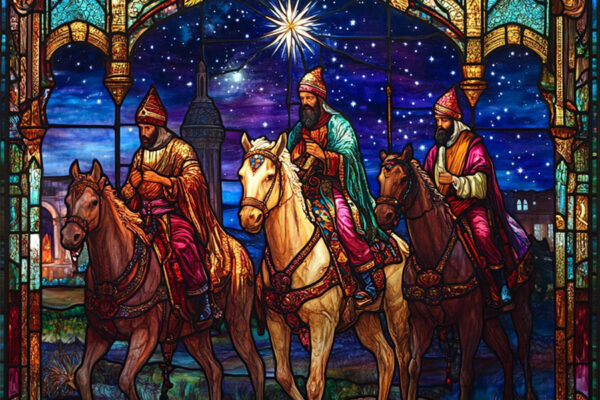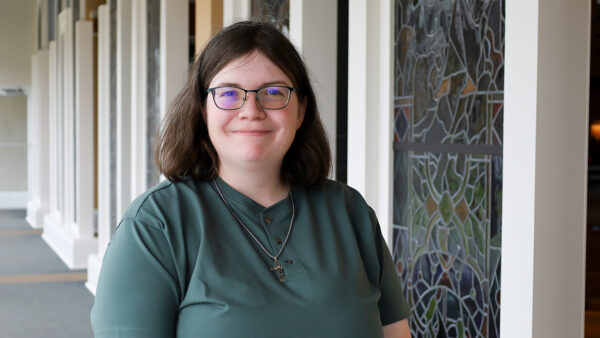The angle of the light

Among the more wondrous moments of 2020 was the appearance of the “Christmas star” in the early evening southwestern sky. People from many walks of life and across the planet took note of that infrequent conjunction of Jupiter and Saturn – the solar system’s two largest planets – aligning with the Earth. Not in 400 years has the alignment been so close; not in 800 years have Earth-bound observers had such a good view of it. And this time, it happened just four days before Christmas. Wondrous.
Our neighbor across the street and two doors up has a very bright light in her backyard. Several years ago, I was given a lovely piece of stained-glass art that we have hung in a window by the reading chair in the loft off our bedroom. At night, the neighbor’s security light beams through that window and the art piece, casting a magnified image of the stained-glass heart onto the bedroom wall, like a luminous testimonial to love. Wondrous.
The security equipment. The glass heart. This house. That window, just there. None of those things was created or put in place in relationship to any of the others. Each has its own story and meaning and independent significance. Yet together, the angle of the light makes so much more out of them, for those who will notice.
Jupiter. Saturn. Earth. The sun. The Gregorian calendar. Christian holidays. These, too, follow their relatively independent orbits and journeys and rhythms and patterns, each set in its place by its particular dynamics. Yet together, the angle of the light in this December gave them a collective significance that meant so much more for those who would notice.
Epiphany is the season of revelation. For the half-dozen or so weeks after Christmas, Christians celebrate the many ways in which Jesus is revealed to the world as the messiah, son of God, savior. The biblical stories during Epiphany tell of heaven breaking open and miracles and healings and Jesus’s extraordinary teaching and interpretation of God’s word. These can make it seem that revelation is only something spectacular, out of the ordinary. For many of us, it can seem that the time of revelation is largely past. Where are the healings, the miracles, the voices from heaven, the clear teaching of truth today?
A closer look at the biblical stories, though, will show that it wasn’t all so plain and simple back then, either. The stories of Jesus’s baptism only hint at the possibility that anyone other than Jesus saw the heavens open and the dove descend. Not all who listened to Jesus teach thought he brought the truth. Some accused him of healing by the power of the devil, not of God. It is the gospel writers and their communities who, in Luke’s words, “write … so that you may know the truth concerning these things” and, in John’s words, tell of “signs … written so that you may come to believe that Jesus is the Messiah.”
Jesus did not bring God into the world. Jesus did not bring revelation into the world. God and the truth about the world are in the world from the very beginning, from and in creation. What Jesus brought, just like what God brought to the Jews in the Exodus and through their wilderness experience, is a light. That light shows the alignment of creation with God’s will and casts its image across our lives. If we ignore the light, things seem chaotic, random, and meaningless. With it, we see that this is God’s world, we are God’s people, and our hope is in God’s future. It is not a question, whether or not God is present and active; it’s all in the angle of the light.
-Peter A. Pettit, teaching pastor





Jeanne Withycombe
I have always been fascinated by what light does to things – one reason for my camera hobby. In the morning the sun shines through my patio door onto the crystal in the china cabinet making dozens of little rainbows on the walls. I always stop for a minute to admire – and to give thanks for such beauty in the world. Thank you for your writing this week.
Phyllis Hofer
This was absolutely a beautiful way of putting this! I have printed it and will re-read it periodically to remind myself of the wonders and love of our God!